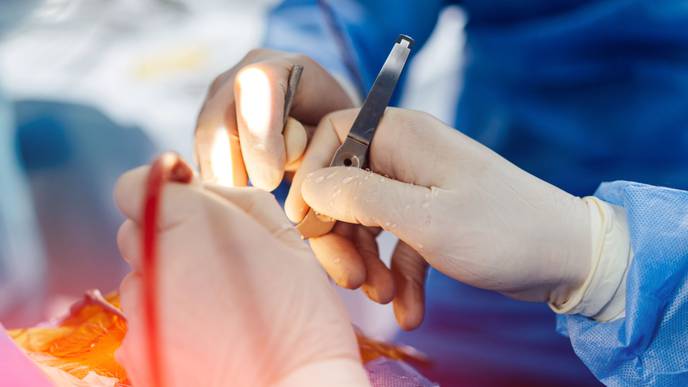A Flexible Microdisplay Can Monitor and Visualize Brain Activity in Real-time During Brain Surgery

04/25/2024
Researchers then used inkjet printing to deposit quantum dot inks on the surface of the LEDs to convert their blue light to multiple other colors.
Next steps
Dayeh’s team is working to build a microdisplay that will include 100,000 LEDs, with a resolution equivalent to that of a smartphone screen. Each LED in those displays would reflect the activity of a few hundred neurons. These brain microdisplays will cost a fraction of a high-end smartphone.
This brain microdisplay will also include a foldable portion. This would allow surgeons to operate within the foldable portion and monitor the impact of the procedure as the other, unfolded portion of the microdisplay shows the status of the brain in real time.
Researchers are also working on one limitation of the study. The close proximity of the LED sensors and the PtNRGrids led to a slight interference and noise in the data. The team plans to build customized hardware to change the frequency of the pulses that turn on the LEDs to make it easier to screen out that signal, which is not relevant to the brain’s electrical activity.
The work was supported by the National Institutes of Health primarily by Dayeh’s Director’s New Innovator Award No. NIBIB DP2-EB029757 titled “Bringing Light to FunctionalMapping in ResectiveNeurosurgery”. The research was supported in part by the BRAIN® Initiative NIH grants R01NS123655, K99NS119291, UG3NS123723, and 5R01NS109553.
The brain microdisplay was fabricated in the Nano3 cleanroom facilities at UC San Diego’s Qualcomm Institute and was tested in large mammals at UC San Diego’s Center of the Future of Surgery.
An electroencephalogram microdisplay to visualize neuronal activity on the brain surface
Youngbin Tchoe, Tianhai Wu, Hoi Sang U, David M Roth, Dogwood Kin, Jiwan Lee, Patricia Pizarro, Karen J. Tonsfeldt, Keundong Lee, Po Chun Chen, Andrew M. Bourhis, Ian Galton, Eric Halgren, Shadi A. Dayeh: Department of Electrical and Computer Engineering, UC San Diego
Dayeh also has an appointment in the Department of Neurological Surgery at UC San Diego.
Youngbin Tchoe, now at Ulsan National Institute of Science and Technology, Korea
David M. Roth, Department of Anesthesiology, UC San Diego
Daniel R. Cleary, Oregon Health and Science University
Brian Coughlin, Angelique Paulk and Sydney Cash, Department of Neurology, Massachusetts General Hospital
Jimmy Yang, Department of Neurological Surgery, The Ohio State University
Karen Tonsfeld, Department of Obstetrics, Gynecology and Reproductive Sciences at the Center for Reproductive Science and Medicine at UC San Diego
Eric Halgren, Departments of Radiology and Neurosciences, UC San Diego
UC San Diego and Massachusetts General Hospital have filed a provisional patent application on the device. Tchoe, Cleary, Paulk, Halgren, Cash and Dayeh have equity in Cortical Sciences Inc, which was cofounded by the team to commercialize PtNRGrids. Dayeh was a paid consultant to MaXentric Technologies. Cleary and Tonsfeld have equity in Surgical Simulations LLC. The MGH Translational Research Center has clinical research support agreements with Neuralink, Paradromics and Synchorn, for which Cash provides consultative input.

Facebook Comments